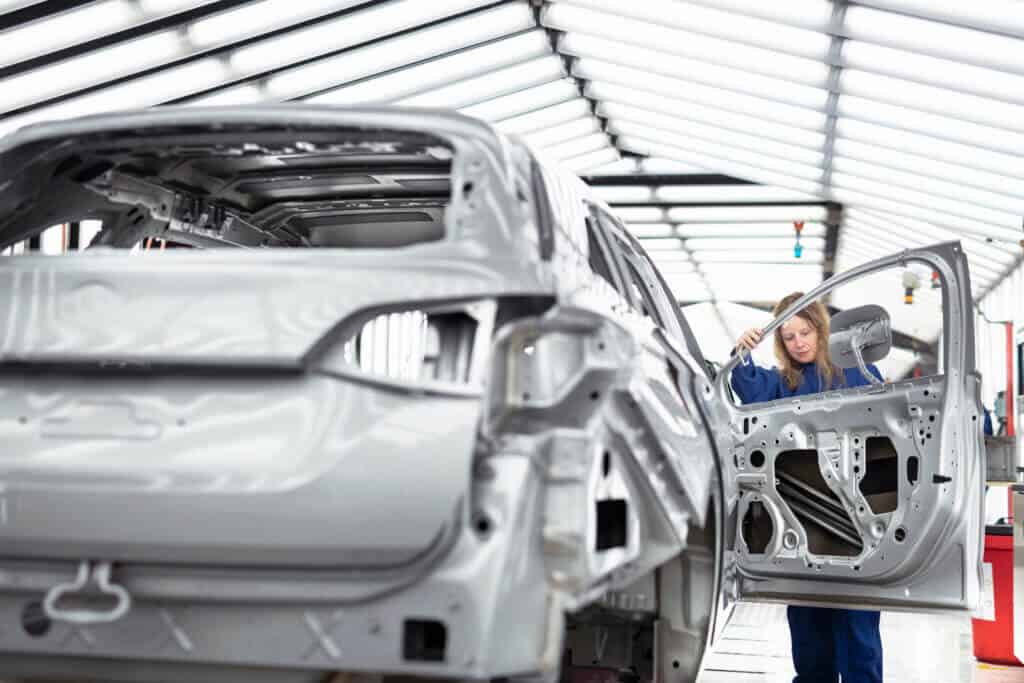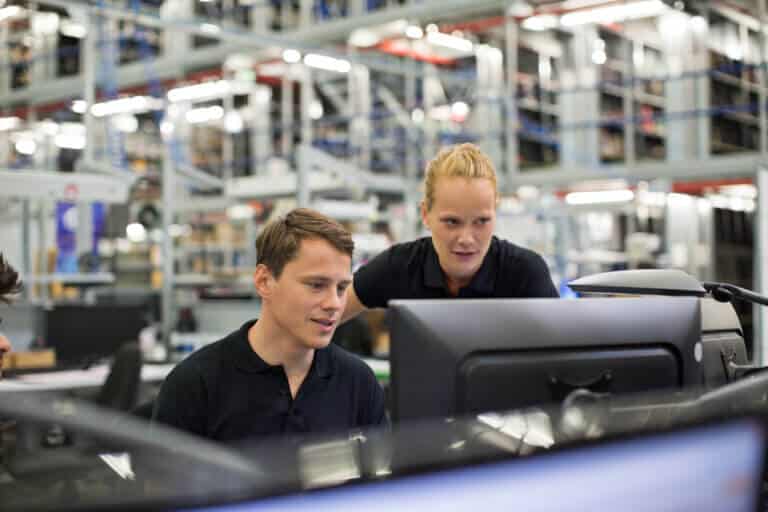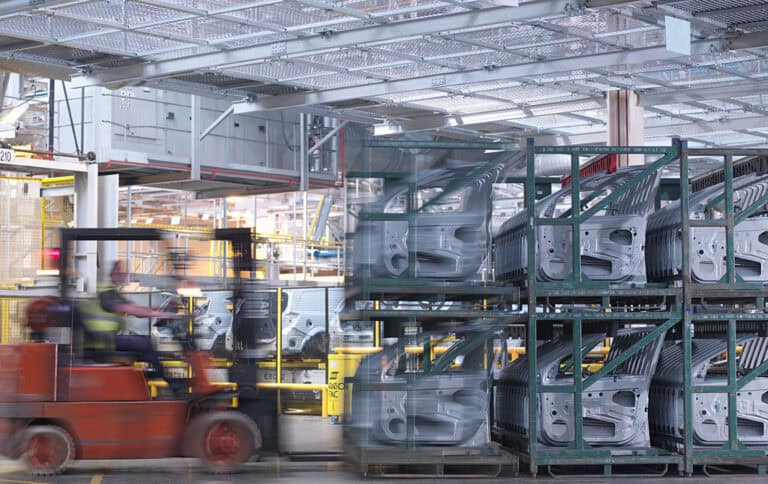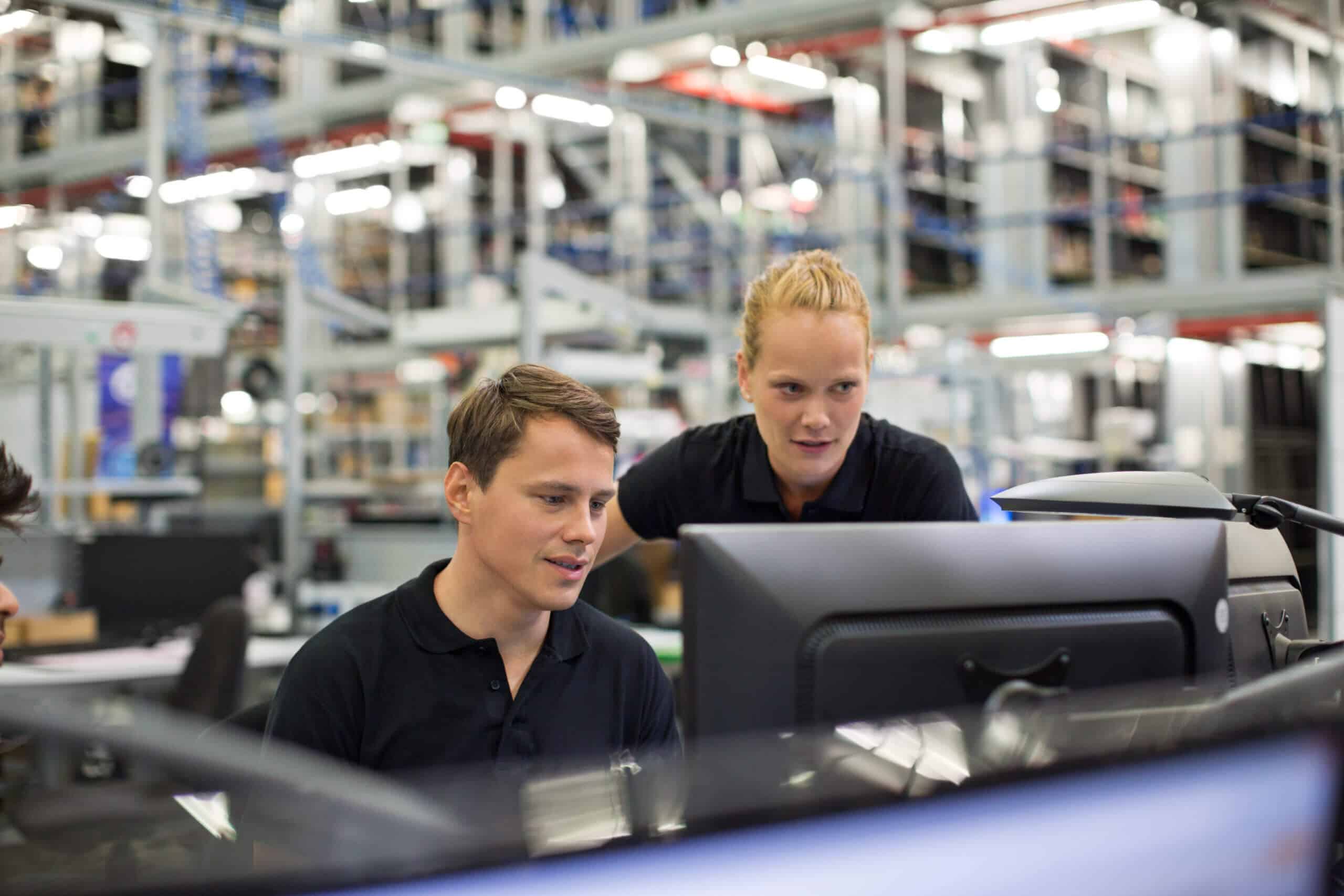
Despite increased interest from the public, world governments, and international investment firms, the electric vehicle (EV) industry remains something of a speculative market. It’s clear that there is a huge demand for EVs, especially with global greenhouse gas (GHG) emissions continuing their yearly upward trend. However, due to a tangled web of variables, the logistical difficulties of EV mass production transcend standard automotive production.
The truth is that the EV industry is playing in many different sandboxes. There are the demands of environmental, social, and governance (ESG) initiatives, which have companies the world over re-examining every aspect of their business. You have the rare minerals market, which is embroiled in geopolitical subtext. And then, of course, you also have the supply chain, without which you wouldn’t have EVs in the first place.
Ultimately, EVs play many roles: they’re key to meeting some of our global sustainability goals, but they’re also pivotal in ensuring the long-term viability of the automotive industry. In this blog, we’ll take an in-depth look at why EVs haven’t yet taken over traditional vehicles and how the mass production of EVs is quite a bit more complicated than simply swapping old gasoline-powered engines for electric ones.
The current climate of EV production
When it comes to EVs, there are many competing priorities—all of them hugely important. We want to avoid the worst effects of climate change, and electric vehicles are viewed as an important element of decarbonized transportation. Yet we also want to ensure our supply chains are free of forced labor or other human rights abuses and environmental damage. Because, in plain language, what’s the benefit of harming ecosystems to make electric vehicles whose primary purpose right now is to protect ecosystems? That’s self-defeating, and automakers understand this.
At the same time, the U.S. government is exploring how to protect its business interests in the context of this shift to a more sustainable energy economy. The demand for the resources required to produce cleaner vehicles is expected to skyrocket in the coming years, and U.S. supply chains that are hugely dependent on foreign sources could be vulnerable to geopolitical tension or conflict. A major policy priority for the U.S. will be to ensure that domestic businesses don’t lose access to these resources as a result. In addition to exploring policy options, the government is also putting pressure on businesses to reduce our dependence on foreign sourcing by exploring options that are closer to home.
It’s a tough environment for legislators and businesses to navigate. The activities involved in mitigating the worst impacts of climate change significantly overlap with the activities involved in controlling some of the rarest and most strategically valuable materials in the world. The energy transition, electrification of the grid, and future economic security depend on reliable access to these materials. Automotive companies are caught in the middle of these complicated dynamics. They are under pressure to meet demands not only out of business necessity but also to aid national net-zero ambitions and protect global ecosystems for future generations to flourish. The stakes are extraordinarily high.
Many nations, including the United States, consider EVs to be critical on the path to reducing greenhouse gas emissions and overall reliance on fossil fuels for energy. The US is working toward an ambitious goal: ensuring that by 2030, 50% of all new vehicles sold in the country will be EVs. Reaching this goal depends on the reliability of EV supply chains, which significantly rests on the stable supply of a few materials that are key to battery technology: lithium, cobalt, and nickel.
What’s driving our EV sourcing challenges?
These developments create an interesting choice for automakers. China is a significant source of the rare metals needed for EV batteries, and demand for EVs is likely to skyrocket in the near future, driven by national priorities and efforts to reduce negative environmental impacts. Yet due to developments such as the Uyghur Forced Labor Prevention Act (UFLPA) and the proposed EU import ban on goods connected to forced labor, sourcing from China is viewed as increasingly risky.
EV supply chains revolve around a few rare, crucial minerals
- Lithium—the largest known reserves are in South America but are underproduced. China is the top global producer of lithium today. But even if it weren’t, China retains the most expansive and sophisticated infrastructure for refining lithium. This means that “finding a new source” of the raw material does not necessarily give you an easy path away from China.
- Cobalt—The Democratic Republic of Congo holds more than 50% of the world’s known cobalt reserves. However, a significant portion of cobalt mining is connected to small, artisanal mines where it is difficult to confirm labor standards and where allegations of child labor have been made. China has also invested heavily in mining operations in Africa. So, using cobalt that was mined in Africa, once again, does not necessarily mitigate the China connection.
- Nickel—though Indonesia, Australia, and Brazil hold the world’s largest known nickel reserves, Russia is also a leader in nickel production.
Challenges that supply chains face with the rise of EVs
In addition, depending on the destination market, various trade agreements can provide significant cost benefits for products that meet the criteria by reducing or eliminating tariffs on materials. These criteria usually revolve around the country of origin of the base materials and the ultimate percentage of those materials that make up the end product that can be traced back to countries that fall within the trade agreement. So, the financial benefits of trade agreements also rest on the ability to document the source—at the country level—of each material in the finished product.
The factors noted above make it clearer how complicated it can be to avoid human rights risks or a connection to China by simply sourcing from a different region. Complicating matters further is the reality that all business decisions—especially supply chain ones—are interdependent. Optimizing one specific outcome, such as avoiding regions with dubious human rights records, can have significant implications in other areas, such as the cost of materials, whether the new materials qualify for a trade agreement, or the ease of transporting from the new sourcing location. In reality, all these interdependent factors are assessed alongside each other with the goal of finding the best overall outcome for the business—one that complies with all legal and ethical standards and keeps costs lowest and long-term profitability and growth potential highest.
One of the main challenges for companies has been a lack of visibility into their sub-tier suppliers of parts, who are in turn dependent on their own networks of Tier 2 and Tier 3 suppliers. Automotive supply chains, in particular, can be very complex, especially with the exponential advances in automotive technology. For example, the wafer is needed to manufacture the semiconductor, which is then required to complete production of the onboard computer. It is understandable to ask, “With such complexity, how would I even begin to establish sub-tier visibility?” And in a way, that’s the right question for leaders who want to manage these risks, comply with all relevant laws, safeguard their access to the world’s biggest markets, reduce the company’s reputational risk, and simply ensure their supply chain does the right thing. But the right question is, “How do I begin?”
How to overcome the challenges of EV sourcing
A best practice for sourcing materials is to vet each supplier back to the raw material level, understand the ownership structure of the supplier, and establish proof that they operate in a compliant and ethical manner. Then, track the flow of materials through every subsequent stage of the supply chain and do the same for suppliers at those levels. This is the sort of visibility envisioned by an increasing number of new global trade laws. Though unthinkable just a decade ago, deep visibility of the supply chain is now part of basic due diligence.
It is important that companies be very clear on their goals and objectives—and how they will prioritize those. Companies making EVs are going to need these rare minerals and metals. How they choose to source these materials could expose them to compliance and reputational risks. In reality, the best process for managing compliance, ESG, cost, and supply considerations is to consolidate the data surrounding compliance requirements, trade agreement details, supplier ESG practices, and even the ownership structure of each of their suppliers around the world. This understanding should then be integrated into the systems that manage the data flows across the supply chain to inform decisions, store relevant documentation, and automatically alert decision-makers when risks cross a specified threshold. These are the sorts of business capabilities that complex global supply chains should begin—and already are—incorporating now.
Sourcing and compliance solutions for the automotive industry
Automotive manufacturing has become incredibly complex, and supply chain challenges are compounded when businesses use siloed internal technology to manage their data and coordinate supply and production. E2open brings all essential direct procurement functions together on a single, connected platform and helps your business shift to a strategic new direct procurement approach—one that provides the agility to capture growth opportunities and increase resiliency.
With the rise of EVs and autonomous vehicles, the intricacies of automotive supply chains are expected to grow. Vehicle manufacturers can offset the impact of these challenges through the use of automation and technology to do some of the heavy lifting and take the pressure off of their human resources.
But there is another thought experiment we can consider. What if you could automate and expedite some of the core steps to mapping your value stream at all tiers, providing the visibility needed to construct a robust supplier map and assess the risk within your supply chain? What if you could then build upon this network visibility by adding transactional information that reveals the flow of materials, components, and business processes between and among tiers, maintaining auditable records to demonstrate due diligence for forced labor traceability compliance? What if you could cross-reference your supplier network and transaction flows to a database of trade regulations to reveal a sourcing strategy that minimizes your import duties for each market you sell into? And what if you could do all these things continuously, in near real-time, so that your decisions stay dynamic and based on realities on the ground? This is the sort of end-to-end decision-making e2open specializes in, and it can help lay the groundwork for future-oriented sourcing, production, transportation, compliance, and circularity within the automotive industry—and other sectors as well.






